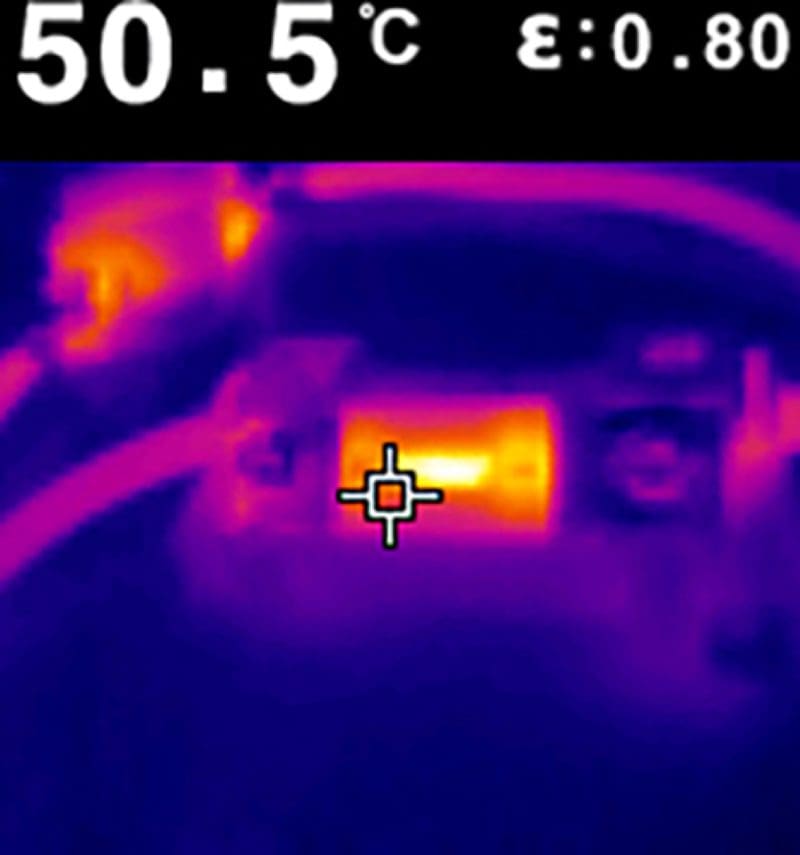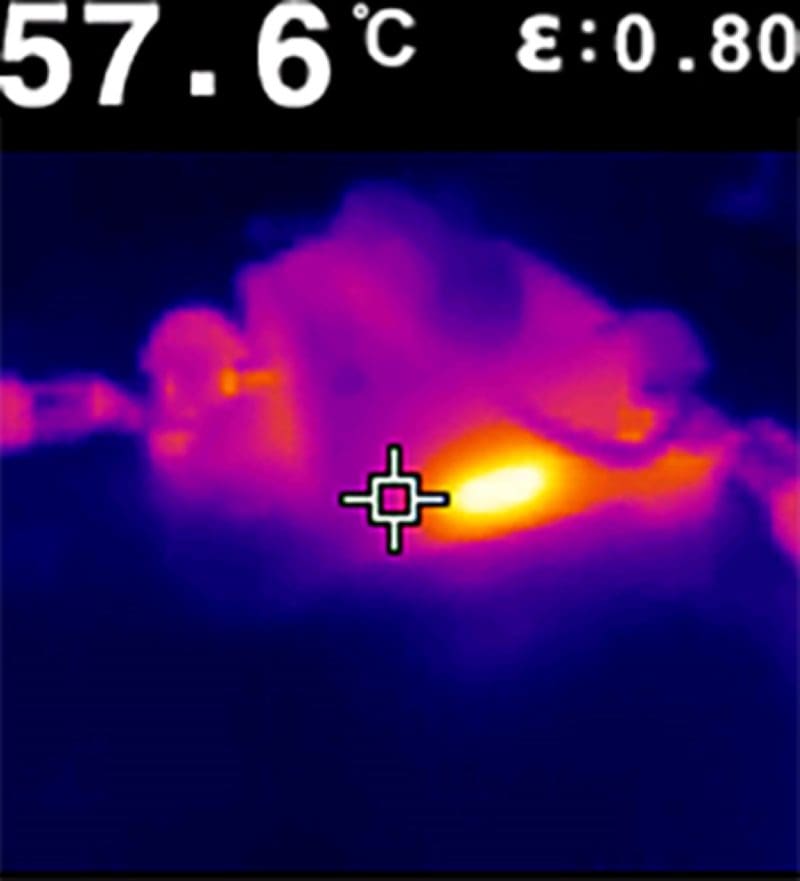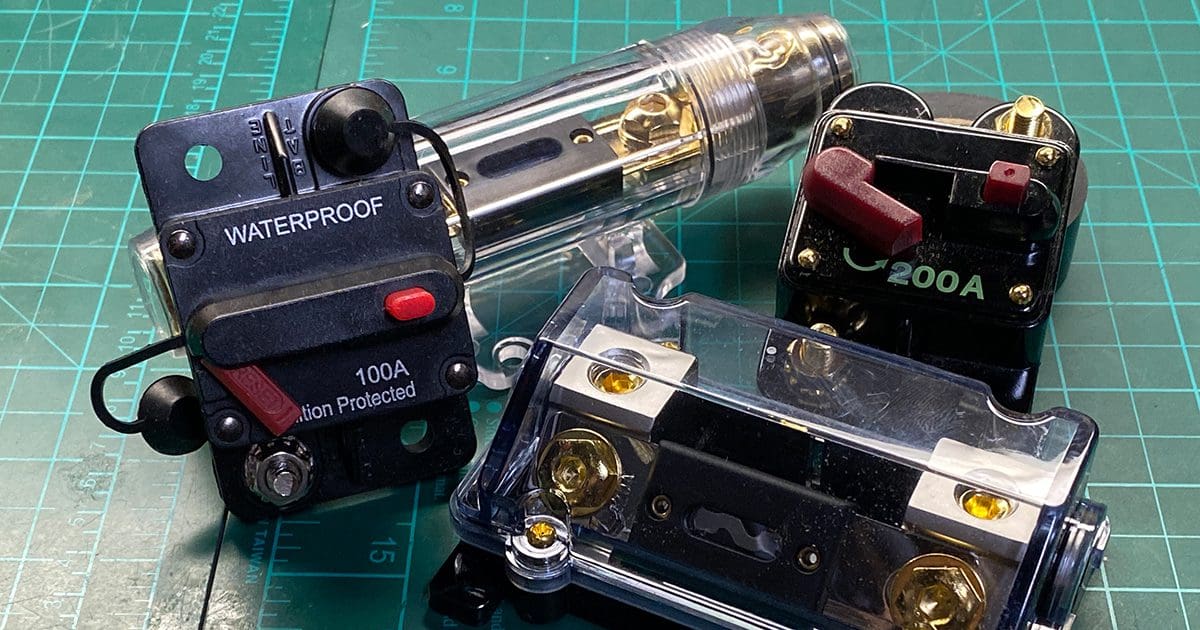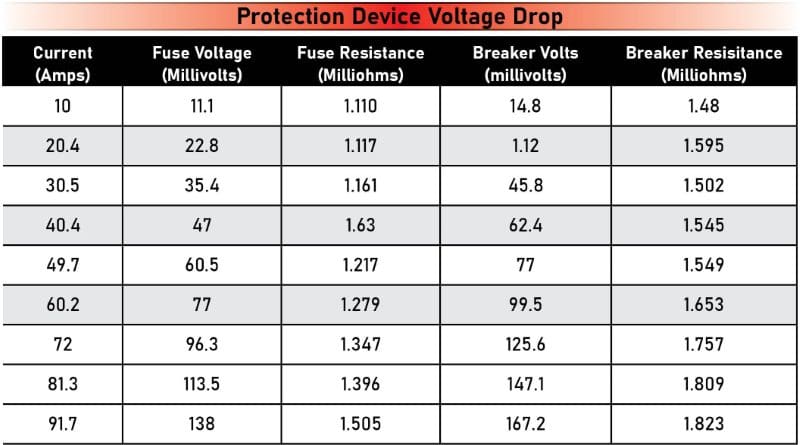If you’re into the SPL (sound pressure level) side of the car audio industry, you should be acutely aware of the need to deliver every amp of current and the most possible voltage to your amplifiers. The more power you can feed an amp, the more power it’s likely to be able to send to your subwoofers. We also know that every connection to a battery should have a protection device such as a fuse or circuit breaker. Why don’t we measure the voltage drop across each when passing a lot of current?
A Quick Review on Overcurrent Protection Devices
If you’re having an audio system that includes an amplifier installed in your car or truck, the technician will need to run a large-gauge wire to the positive and, with increasing frequency, the negative battery terminal. Any connection made to the positive battery terminal should have a fuse or circuit breaker installed to protect the system from an overcurrent condition should a wire short to the chassis.
Both fuses and circuit breakers rely on resistance to create heat. Once enough heat is present, the fuse melts, or the circuit breaker pops open. Fuses and breakers are designed to make a specific amount of heat based on when the manufacturer wants the device to open.
One thing to keep in mind with thermal fuses is that they are affected by the environment in which they’re installed. For example, a 200-Amp ANL fuse in the trunk of a sedan may be able to pass 160 amps of current without popping. If the same fuse is mounted beside the engine under the hood where the temperature might be more than 150 degrees Fahrenheit, it might pop when 135 amps of current flows. Circuit breakers have similar temperature derating properties. Make sure your installer keeps the protection device as far away from heat sources as possible.
Measuring Resistance in High-Current Devices
To perform this test, I’ll connect a 1,500-watt Class GH amplifier to my power supply bank and wire both the fuse and circuit breaker in series on the positive power wire. I will also add a 0.001-ohm shunt resistor in series to measure the current flowing to the amp. I’ll use my Fluke 87-V multimeter to measure the voltage across the shunt resistor to determine the current. For every amp of current flowing through the shunt, there will be a 0.001-volt drop across the resistor. So, if 50 amps of current are flowing, I’ll measure 50 millivolts. Next, I can measure the voltage across each protection device and do some simple math to determine its resistance. I’ll make measurements at different current levels to see if the heating effect increases the resistance significantly.
Based on what I learned in taking apart a circuit breaker, I hypothesized that it had more resistance than a fuse. The data in the table supports this theory, and it would be safe to say, in comparing these two overcurrent protection devices, that the circuit breaker has 30% more resistance.
Let’s analyze the data a little bit. The chart below graphs the voltage drop across the fuse and breaker as a function of current. Not unexpectedly, resistance increases with current flow and, consequently, temperature. Each measurement was taken within 10 seconds of the other device at the same current level. It was about a minute between each measurement set, except for the last. I let the amp play for about five minutes to see if the heat would build up and dramatically affect the reading.

The trends are pretty similar, though the breaker’s resistance does increase a little faster above 50 amps. Now, let’s calculate the resistance of the devices at each current level.



Car Audio Fuses Vs. Circuit Breakers
What has this experiment shown? My hypothesis that fuses offer less resistance than circuit breakers has been verified. With that said, when appropriately sized, the difference and perhaps the presence of the devices in the system are negligible in a regular consumer application. If you’re competing in SPL competitions and using ANL fuses or circuit breakers with 0-AWG power cable, then fuses are the best choice given the two options. If you don’t want to run fuses or circuit breakers, the E50 fire extinguisher from Element is an excellent investment. It works well on A (wood), B (flammable liquids and gas), C (electrical) and K (cooking oil and grease) fires and is small enough to fit under the front seat.

Drop by your local specialty mobile enhancement retailer today to find out about the fuses and fuse holders available to protect your vehicle.


